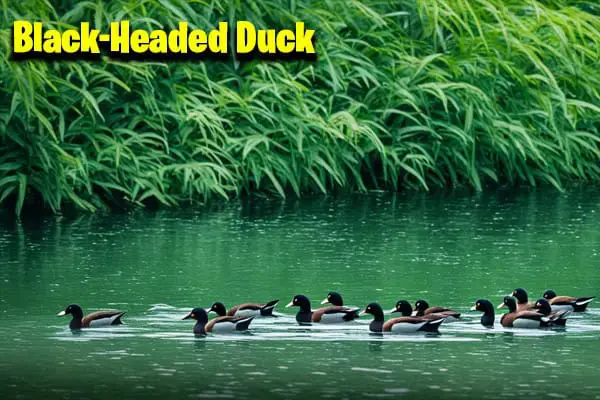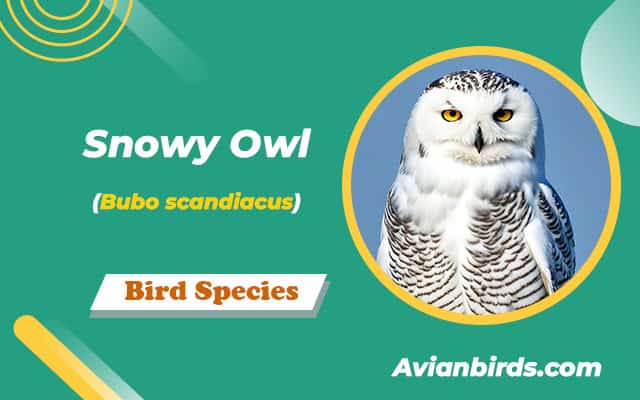Black-Headed Duck: Unique Waterfowl of South America
Did you know the Black-Headed Duck, known as Heteronetta atricapilla, is a rare bird that lays eggs in other birds’ nests? This behavior makes it stand out in the animal world. It lives in South America’s wetlands, marshes, and lakes, often unseen because it’s small and has unique ways.
~Everything You Need To Know About The Black-Headed Duck~
Fun Facts:
Scientific Name: Heteronetta atricapilla
Weight: 434 – 640 grams
Length: 35 – 40 cm
Lifespan: There isn’t much information on how long Heteronetta atricapilla lives. Up to 80% of ducklings die in their first year, but those that survive may live up to 2 more years. The longest recorded lifespan in their family (Anatidae) is 28 years.
Diet: This duck is mostly an herbivore, eating leaves, tubers, nuts, grains, and roots. However, it also eats crustaceans and insects.
Introduction to the Black-Headed Duck
The Black-Headed Duck is a rare sight for bird watchers. They are often seen alone or with a partner. Their home is in the quiet lakes and wetlands of northern Argentina, Paraguay, and Chile.
This duck has a long, low profile when swimming. This helps them blend in and is hard to spot in the wild. Their unique look and behaviors set them apart from other ducks.
They have a special way of making babies. Unlike many ducks, they don’t build their own nests. Instead, they lay their eggs in other birds’ nests. This behavior shows how they’ve adapted to survive.
The Black-Headed Duck is unique among waterfowl for its rare nature and interesting behaviors. It’s a favorite among bird lovers and scientists. Learning about their life helps us appreciate the variety of South American ducks.
Physical Characteristics of the Black-Headed Duck
The Black-Headed Duck is unique among waterfowl because of its distinct looks. These features help them survive and behave in their environment. They also show interesting differences between males and females.
Distinctive Plumage and Size
The Black-Headed Duck is about 35 to 40 cm long and weighs 434 to 640 grams. Males have a striking black head and a lighter body. They also have small white spots on their wings. Juveniles have lighter markings above their eyes.

Their beak is dark yellow with a black tip, and their legs are grey with green feet.
Coloration of Males vs. Females
Males and females Black-Headed Ducks look very different. Males have a bold black head and lighter body colors. This makes them stand out. Females have a more muted brownish color, which helps them hide in the wild.
This difference in color helps them find mates and avoid predators. Adult females are usually bigger than males. This size difference helps tell males from females. These physical traits show how the Black-Headed Duck has adapted to its environment.
| Characteristic | Male | Female |
|---|---|---|
| Size (cm) | 35-40 | 35-40 |
| Weight (grams) | 434-640 | 434-640 |
| Plumage Color | Black head, lighter body | Drab, brownish overall |
| Distinct Features | White spots on wings | Lighter markings above eyes |
| Beak Color | Dark yellow with black tip | Dark yellow with black tip |
| Legs Color | Grey with green-shaded feet | Grey with green-shaded feet |
Habitat and Distribution of the Black-Headed Duck
The Black-Headed Duck lives in many places across South America. They like different environments and need certain conditions to survive. This helps them breed and stay alive.
Geographic Range in South America
You can find these ducks in Paraguay, Uruguay, Chile, and northern Argentina. They move around to find the best places to live. Some ducks go north when it gets cold, to find better food and shelter.
Preferred Environmental Conditions
Black-Headed Ducks like many types of places. They need lots of plants for food and a safe place to nest. Their favorite spots include:
- Marshes
- Swamps
- Permanently freshwater lakes
- Coastal marshes
- Tropical wetlands
These areas have lots of water plants that are their main food. They can live in both fresh and salty water. Swamps, peatlands, and bogs are perfect for them because they have everything they need.
Feeding Habits and Diet
The Black-Headed Duck diet shows how they adapt to different places. They mainly eat from the water, changing their eating habits based on their surroundings. Their smart way of finding food shows how resourceful they are.
Primary Food Sources
Black-Headed Ducks eat mostly plants from the water. They like to eat:
- Aquatic plants
- Seeds
- Leaves
- Tubers
They also eat small animals and crustaceans sometimes. This shows they can choose from many food options.
Feeding Behavior and Patterns
Black-Headed Ducks dive into the water to find food. They use a special way to filter mud for hidden food. They usually eat in the early morning.
When it gets hot, they rest. They save energy for the evening. Then, they swim and look for more food.
| Feeding Times | Activity Level | Common Locations |
|---|---|---|
| Early Morning | Active Foraging | Aquatic Plants Areas |
| Midday | Resting | Shaded Areas |
| Evening | Active Swimming | Nesting Zones |
Their flexible and social eating habits help them live in South America’s varied places. They are an interesting part of our bird world.
Reproductive Habits of the Black-Headed Duck
Learning about the Black-Headed Duck’s reproduction shows us how they adapt and interact with their environment. Their unique way of nesting is especially interesting. They lay their eggs in the nests of other birds instead of making their own. This behavior is known as brood parasitism and affects other birds in the ecosystem.
Nesting Behavior and Brood Parasitism
The Black-Headed Duck lays its eggs in the nests of coots and other ducks. On average, a female lays two eggs about a meter above the water. This behavior puts extra work on the host birds, who must care for the eggs that aren’t their own. It shows how complex bird reproduction can be.
Breeding Seasons and Egg Survival Rate
The Black-Headed Duck breeds twice a year, mainly in spring and fall. Even with multiple attempts, only about one-third of the eggs hatch. The young ducks can walk and feed on their own soon after hatching. But, they still face dangers from predators and the need for care from their host species.
Threats Facing the Black-Headed Duck
The Black-Headed Duck faces many threats that put its survival at risk. Habitat loss is a big problem. Things like farming and building cities take away the wetlands and ponds it needs.
Hunting is another big worry. Both legal and illegal hunting hurt the duck’s numbers. It also messes with their breeding and how they live.
These ducks need other birds to help raise their young. But, this can cause trouble. Some birds might eat the duck’s eggs, making things harder for the Black-Headed Duck.
We need to come up with good plans to save the Black-Headed Duck. By being aware and taking action, we can lessen the harm from hunting and losing homes. This way, this special waterfowl can keep living in its natural world.
| Threat | Description | Impact |
|---|---|---|
| Habitat Loss | Reduction of natural environments due to urbanization and agriculture | Decreased breeding and feeding areas |
| Hunting | Legal and illegal hunting practices | Population decline and disrupted behaviors |
| Brood Parasitism | Dependent on host species for raising young | Increased egg destruction by host species |
Conservation Status and Efforts
The Black-Headed Duck’s survival in the wild is crucial. Currently, it’s listed as “Least Concern” by the IUCN, meaning it’s not at risk of extinction now. But, changes in the environment and human actions could change this. Also, We need to stay alert and act quickly.
Current IUCN Classification
The Black-Headed Duck is considered “Least Concern” by the IUCN Red List. This means its population seems stable. However, threats like habitat loss and climate change could harm it. It’s important to keep checking on its status to prepare for challenges.
Human Impact and Conservation Measures
Humans pose a big threat to the Black-Headed Duck, even if it’s not currently endangered. Habitat destruction, water pollution, and bad hunting hurt its chances. To fight these issues, we need strong conservation efforts. Important steps include:
- Protecting and restoring wetland habitats.
- Setting up rules for hunting to keep it sustainable.
- Working with local communities on wetland care.
- Spreading the word on why saving the Black-Headed Duck and its home is key.
By focusing on these actions, we can help make a better home for the Black-Headed Duck. This will protect it for the future.
Check our Previous Articles:
| Red-Breasted Goose (ID Guide) |
| Eurasian Blue Tit: Colorful European Songbird |
| Finches in Illinois |
| Hawks in Ohio |
| White-Tailed Sea Eagle |
Final Thoughts
The Black-Headed Duck is a standout example of South American waterfowl’s rich diversity. Its unique looks and interesting behaviors show its importance in its ecosystem. This overview shows how it lives and the environment that supports it.
Learning more about this species makes us want to protect it even more. Protecting the Black-Headed Duck and its home is key to saving this species and many others in South America.
By spreading awareness and taking action, we can help future generations see and learn about the Black-Headed Duck. Together, we can make sure it remains part of South America’s diverse waterfowl.







